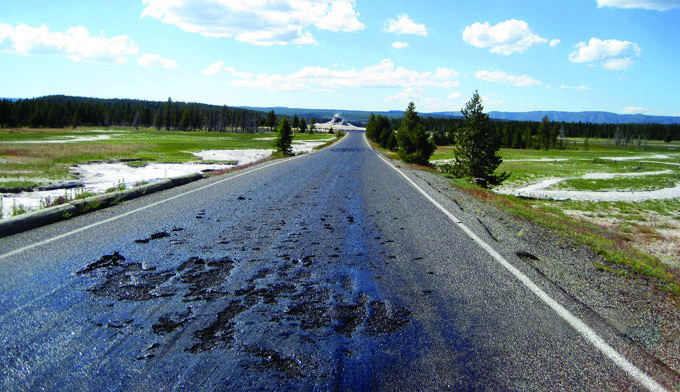Throwback Thursday: From the Vault
Road maintenance required near the Firehole River in Yellowstone National Park.
Next week is National Park Week. To celebrate, the National Park Service is waiving admission fees to all national parks, advocating that this is a week for Americans to discover their national parks and the wonders they contain.
Unfortunately, visitors to national parks are going to find more than herds of buffalo and scenic vistas. With the National Park Service facing nearly $12 billion in deferred maintenance, park guests will also encounter potholes, leaky wastewater systems, and run-down campgrounds. To make matters even worse, not charging an entry fee strips parks of the potential visitor revenues to address these problems.
In 1996, Terry Anderson and Mark Liffman outlined how allowing national parks to charge and retain visitor fees could help parks help themselves in the Chicago Tribune:
A new day is dawning in our national parks. Congress has passed a law allowing the National Park Service to begin a two-year pilot program at 10 designated parks. These parks may charge higher entrance fees and, more important, each park will keep 80 percent of the additional revenues it earns.
This change could transform the major parks such as Yellowstone. The “crown jewel” of our national park system has been tarnished by money problems. This spring, the Park Service delayed the opening of the Beartooth Highway, which brings visitors to the northeast entrance. Then it kept two campgrounds and a museum closed for the summer. And the potholes throughout the park aren’t getting any better.
…
Yellowstone has already taken one tentative step in the direction of higher fees. In 1992 the park introduced fishing fees of $5 for a seven-day permit ($10 for a season pass). Last year, these fees raised $430,000. The money remained in the park and was used to control exotic fish in Yellowstone’s streams and rivers and pay for research on whirling disease, which threatens trout in many parts of the West.
Parks like Yellowstone can become self-supporting. The revenues can improve the parks and reduce the burden on taxpayers who do not use the facilities. This combination is surely better for the parks, for the U.S. Treasury and for the millions of visitors enjoying our natural heritage.
If we want to keep the “crown jewel” status of our national parks, we need to give parks the tools for success. One such tool to fight the enormous maintenance backlog is to continue to allow park managers to charge recreation fees and use the revenues for maintenance and critical projects.
Prior to 1996, parks deposited collected recreation fees into the U.S. Treasury and relied on Congress to appropriate funds back to them. Today, the Federal Lands Recreation Enhancement Act (FLREA) allows at least 80 percent of park fees to remain in the park where they were collected.
Fee revenues allow parks to address critical needs without depending entirely on unreliable Congressional funding. Local park managers decide how fee revenues are spent, which is a critical step in breaking the backlog because no one understands the maintenance challenges facing national parks better than the park managers themselves.
Though Congress still provides more than 90 percent of national park funding, the National Park Service has collected more than $2.75 billion through its recreation fee program. In 2014, FLREA funded nearly 1,545 projects in national parks, half of which addressed deferred maintenance and improved facilities.
As we take the next week to appreciate our national parks and the heritage they represent, we must also seek ways to maintain and improve them. Allowing parks to charge and keep visitor fees is a useful tool for polishing our crown jewels.
For more ideas on how to improve the management of our national parks, see Breaking the Backlog.




